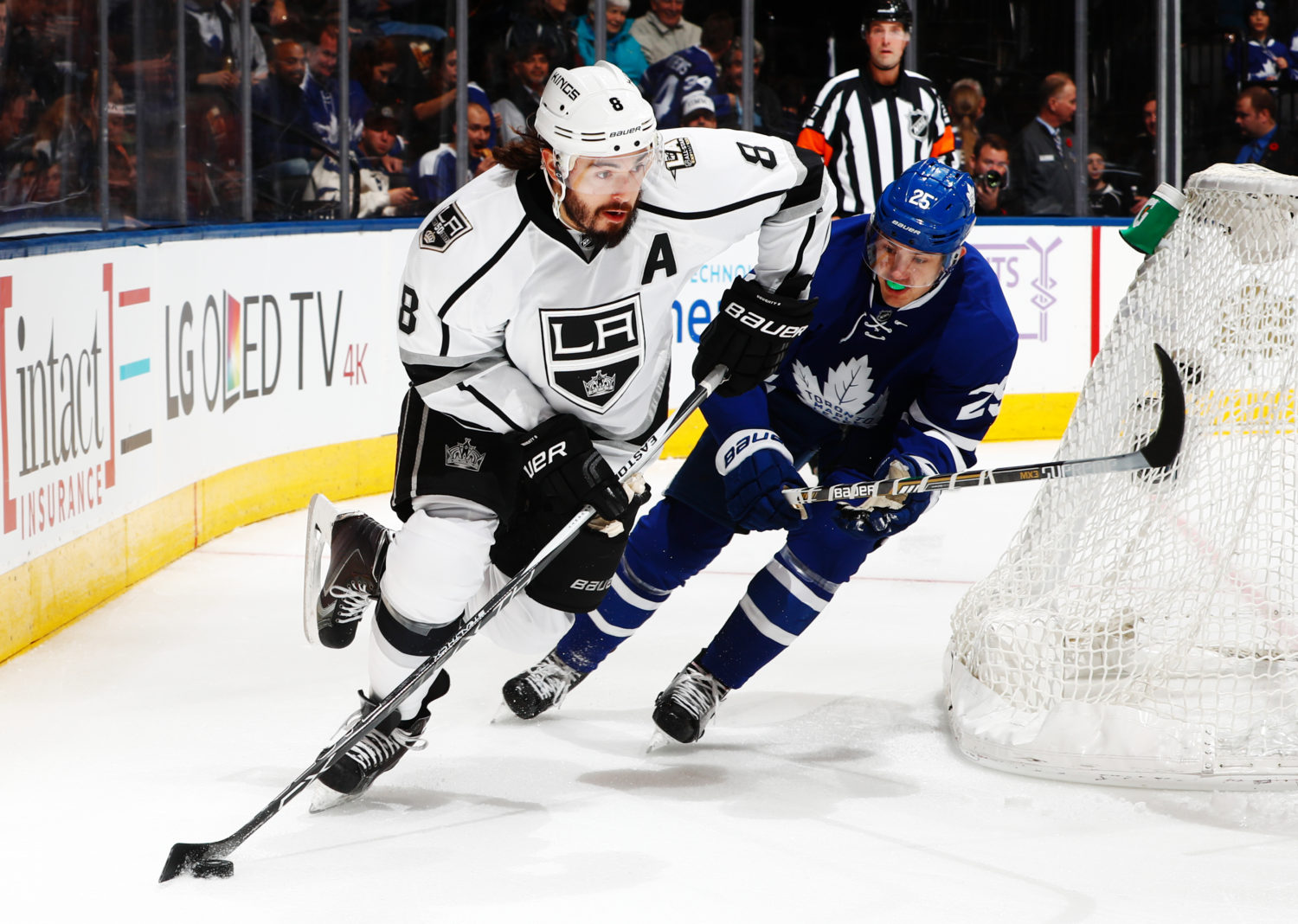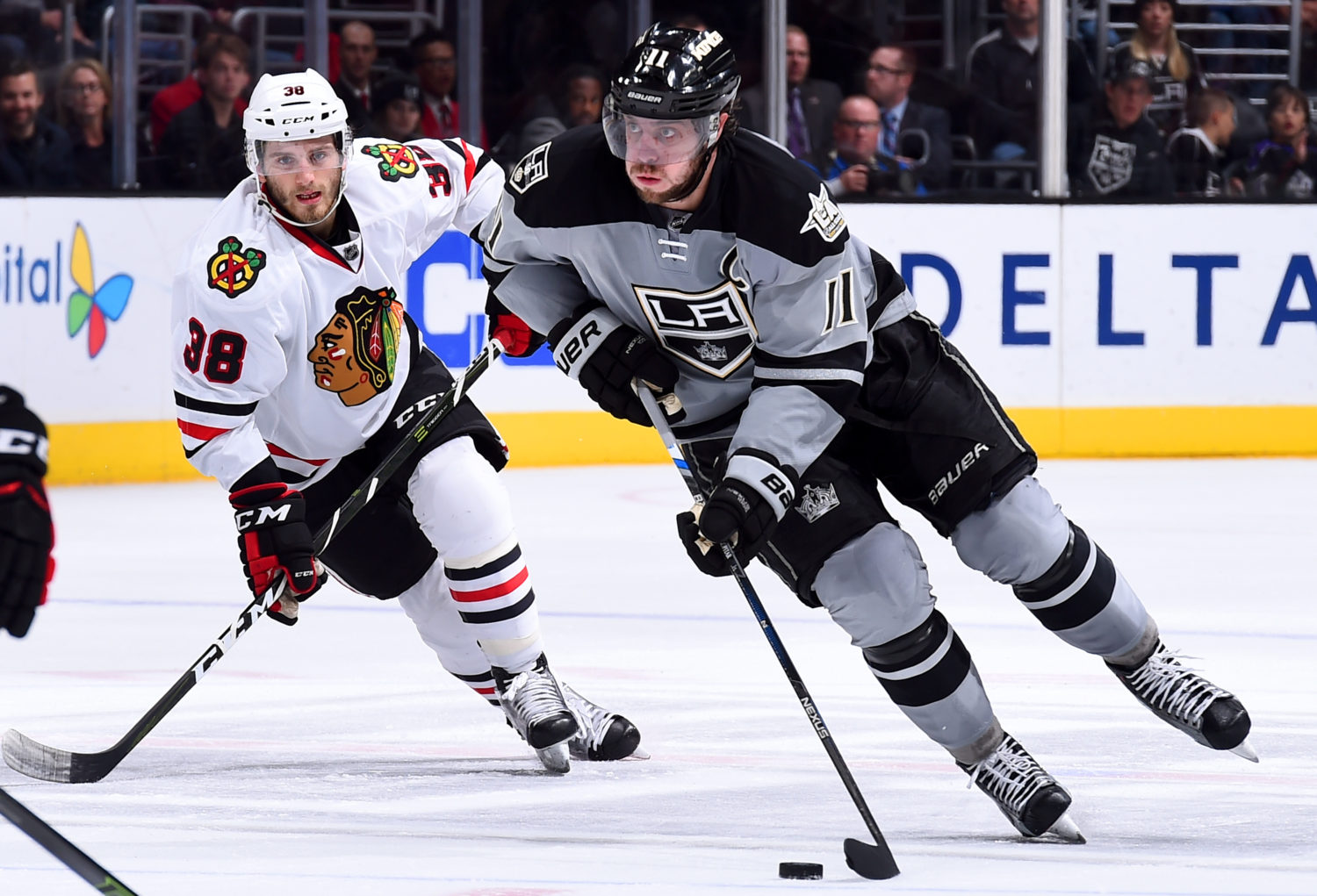There seemed to be a general consensus of the Los Angeles Kings’ style of play entering the season: they were “big,” they played a “heavy” game, and were among the teams less equipped to find success in a “new” NHL that rewarded skill, speed, youth and creativity.
Were those points of view valid? Perhaps. Have the Kings become more mobile at certain positions? Sure, maybe they have. Regardless of the outside perception, the groupthink of the club heading into the season is being challenged, and through the first 22 games of the 2016-17 season, Darryl Sutter’s bunch has again showed that while it might not have the same amount of individual speed as certain teams, it is still more than capable of playing at an up-tempo, raised pace in which defensemen are encouraged to move the puck out of their own zone and into the hands of the forwards as quickly as possible. These efforts to practice and play fast are deeply rooted in Sutter’s systems and sustained the team during its 2-1 overtime win over Chicago on Saturday, a game that featured a particularly swift pace for the first 40 minutes.
“Yeah, yeah, it was up there. I think it was a fun game to watch, for sure,” Marian Gaborik said. “And speed-wise, I felt not too bad.”
The pace slowed down as the checking intensified in the third period, but overall, given the team’s challenges in personnel and the remarkable parity around the league, there’s really not a great deal to be disappointed about when a team extends its winning streak to five games with a win over Chicago.
“I think last night was good,” Anze Kopitar said “I think, what’d they have, two, three shots in the first period? The second period it opened up a little bit, but sometimes that’s going to happen. Obviously we don’t want it to open up like that, we wanted to keep it as tight as we can but it’s going to happen and I think at the end of the day even the period we were good. We were on the net, we had chances, we just didn’t score. I think the pace last night was good.”
It’s not mutually exclusive to have both size and play up-tempo hockey. Teams such as San Jose, Dallas, Washington and St. Louis grade well in both general facets, and Los Angeles build a pair of Stanley Cups upon such concepts. There are also more mobile defenders – players such as Derek Forbort and Kevin Gravel – than those who filled up spots on last year’s blue line. Regardless of any labels affixed, the team itself is most knowledgeable of when it’s playing well and when it’s not, and when its pace could use perhaps an extra jolt of urgency or emotion.
“We critique ourselves on that probably more accurately than anybody else,” Kopitar said. “It’s always been that way, it always will be that way, so we know when we play good and we know when we’re a fast team and a slow team and how to play and how not to play. Whatever the noise is outside, you try to block it as much as you can. We know what our skill set is, we know what our potential is. When we play up to our standards we’re definitely a fast and a big team, for sure.”
Anze Kopitar, on whether the Kings have gotten faster over the last year or two:
I don’t think so, obviously you want to play a fast game and with the bodies that we have it’s what you want to do and then use your size to your advantage obviously. And have a high intensity game, we feel like we can roll four lines fairly consistently and if we do that then the pace is high.
Kopitar, on whether he felt his line improved after his second game back in the lineup:
I thought we were controlling the puck well. I thought we didn’t spend a whole bunch of time in their D-zone, and the offensive zone is obviously the zone that we want to play in. We’ve been controlling the puck there, we were cycling pretty well, protecting the puck well and kind of moving the puck and moving our bodies towards the net. We got some good chances but now we’ve got to score a few more.
Marian Gaborik, on how he felt in his first game back:
Yeah, it was a long time off. Felt better as the game went on, so hopefully getting better and better with a couple good practices and afterwards going to be more games back-to-back so just ramp things up and hopefully feel better and better. But I felt better as the game went on. Still, nine weeks since the start of the year, the first game, it’s going to take some time, but hopefully not too long.
Gaborik, on his conditioning in the game:
It was not too bad, I mean I didn’t play a whole lot. Started off with just maybe a couple of shifts in the first period and then just kind of played more and started feeling better. You know you feel better out there when you’re more in the flow, so yeah, just everything hoping to get better and better.
Gaborik, on his high-grade scoring chance in the third period:
Yeah, I don’t think I missed by much. Just got to have it a little bit more in front, so it wasn’t straight in my wheelhouse, but yeah. Those I have to put in, but it’s good to get that one in overtime there.
Gaborik, on this injury being any different from other long-term injuries:
Well, I haven’t really started [the season with an injury]. I know I played in World Cup, but getting my first game you know, I started the season with being on the shelf this long, so it’s a bit different. Especially with the foot, you can’t do a whole lot off the ice in terms of strengthening and everything. It still feels better in the boot then it feels off the ice but just go out there and getting my skating up to speed and doing a little agility stuff, that helps, for sure. Especially out there on the ice.

(Mark Blinch/NHLI via Getty Images)


Rules for Blog Commenting
Repeated violations of the blog rules will result in site bans, commensurate with the nature and number of offenses.
Please flag any comments that violate the site rules for moderation. For immediate problems regarding problematic posts, please email zdooley@lakings.com.